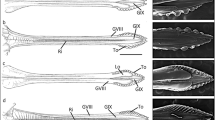Abstract
Pimm and van Aarde question the feasibility of controlling elephant numbers by immunocontraception, arguing that the sterilization or removal of 250 subadult cows each year is the answer to population growth. However, there are no known safe methods of sterilizing free-roaming African elephants. Moving 250 subadult females to another park is impractical as there are very few areas able to receive elephants from Kruger National Park without becoming confronted with an elephant overpopulation problem of their own.
Similar content being viewed by others
Fayrer-Hosken et al. reply
This number of subadult cows cannot be moved without disrupting the social order within their herds. Keeping them in their herds would mean that (assuming a mean herd size of 12.4, as shown in our study, and an average of 3 subadult females per herd) Kruger National Park would have to move 1,033 elephants — an unrealistic and expensive proposition. Hence the only practical way to remove 250 subadult females would be to cull them, which Pimm and van Aarde agree is an unacceptable solution.
We have shown that immunocontraception using porcine zona pellucida (pZP) works in the African elephant, although its long-term effectiveness in controlling populations is still being evaluated in South Africa. The cost and speed of field delivery have not been assessed for vaccinating large groups of elephants. However, contrary to the calculations of population modellers1,2, immunocontraception has worked in herds of wild horses and white-tailed deer3.
Preserving these magnificent creatures and their genetic contribution for the future is a common goal. On the basis of a single administration of a multiple-release pZP vaccine that is being developed for use in horses (I. K. M. Liu, personal communication), it should be possible to reduce the first three vaccinations used in our original study to a single dose and so minimize the stress, cost and labour of elephant immunocontraception.
We therefore question Pimm and van Aarde's criticism regarding the practicality of field immunocontraception for Kruger Park's elephant herds. It is our judgement that preserving these animals through immunocontraception is a realistic strategy that would save elephants without having to kill them.
References
van Aarde, R. J., Whyte, I. & Pimm, S. Anim. Conserv. 2, 287–294 (1999).
Whyte, I., van Aarde, R. J. & Pimm, S. Anim. Conserv. 1, 77–83 (1998).
Kirkpatrick, J. F., Turner, J. W., Liu, I. K. M., Fayrer-Hosken, R. A. & Rutberg, A. T. Reprod. Fertil. Dev. 9, 105–110 (1997).
Author information
Authors and Affiliations
Corresponding author
Additional information
brief communications is intended to provide a forum for both brief, topical reports of general scientific interest and technical discussion of recently published material of particular interest to non-specialist readers. Priority will be given to contributions that have fewer than 500 words, 10 references and only one figure. Detailed guidelines are available on Nature's website (http://www.nature.com) or on request from nature@nature.com
Rights and permissions
About this article
Cite this article
Fayrer-Hosken, R., Grobler, D., van Altena, J. et al. African elephants and contraception. Nature 411, 766 (2001). https://doi.org/10.1038/35081156
Issue Date:
DOI: https://doi.org/10.1038/35081156
Comments
By submitting a comment you agree to abide by our Terms and Community Guidelines. If you find something abusive or that does not comply with our terms or guidelines please flag it as inappropriate.



